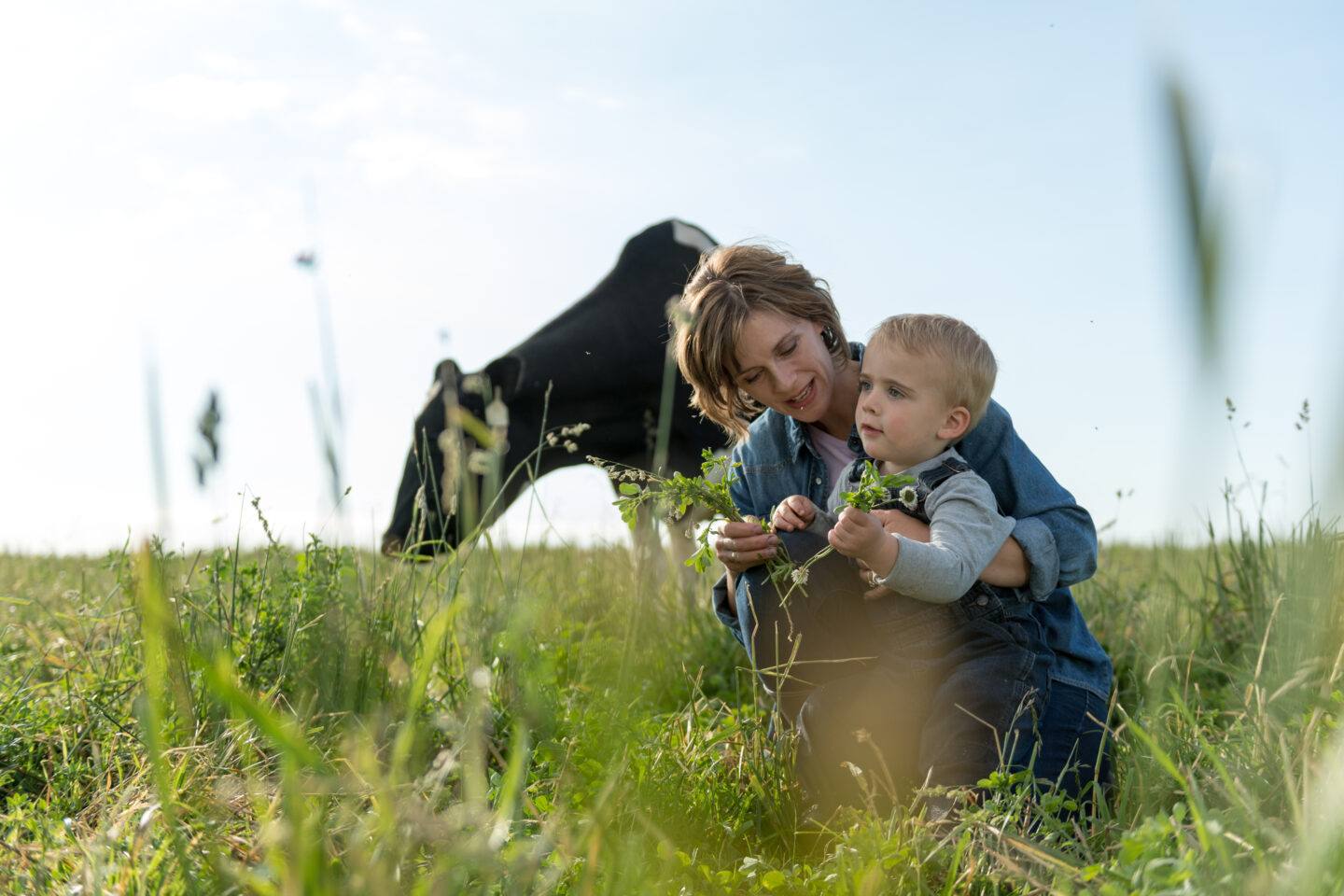How to get the whole family excited about sustainable swaps

Organic Valley
"The small, everyday choices of how you live your life do add up."
This article is sponsored by Organic Valley. Thank you for supporting the brands that support Motherly and mamas.
Table of Contents
As parents will agree, the little things can make all the difference while raising our kids: From creating special memories together to modeling kind behaviors, these moments can have big impacts. The same is true for the effects each of our actions can have on the planet—and that’s why sustainability doesn’t have to be all-or-nothing.
“The small, everyday choices of how you live your life do add up,” Nicole Rakobitsch, Organic Valley’s Director of Sustainability, tells Motherly. “Start with what feels doable and right and build upon it.”
Rakobitsch has plenty of experience putting sustainable practices into action in her own life on a wind- and solar-powered homestead in Wisconsin. For parents eager to make sustainability-minded choices without a full homestead commitment, Rakobitsch suggests turning it into a family affair with age-appropriate ways to involve everyone.
One good place to start the conversation about environmental stewardship is to tie it back to our everyday routines: Where does the water we use to brush our teeth come from? What happens to plastic bottles when we’re done with them? How can we reuse items instead of throwing them away? With curiosity at the root, it’s fun to brainstorm creative solutions.
To help spark inspiration, we asked Rakobitsch for some family-friendly sustainable swaps. As the Director of Sustainability for Organic Valley, a company that leads the way with socially, economically and environmentally sustainable practices, Rakobitsch has a lot of ideas that individuals can put into practice in their own homes—no farming experience required!
Involve kids in meal planning
Deciding what to make for dinner may seem like a surprising place to improve sustainability practices. However, Rakobitsch says this is one way in which families can take a “small, achievable action that has a big impact”—especially because nearly 40% of all food in the United States is wasted. By buying three to four days’ worth of groceries for pre-planned meals, it can be easier to know how and when the ingredients will be used. As a result, less ends up in the trash.
Related: The beginner’s guide to ethical eating—for the good of the earth & your taste buds
Be thoughtful with ingredient choices
After meal planning, the next opportunity to improve your environmental footprint is by selecting minimally processed products. If you are just beginning this journey, it’s completely fine to reveal to your kids that you are learning, too. By working together to understand food labels—like USDA Organic, Pasture-Raised and Low-Carbon—you can support brands like Organic Valley that make sustainable choices on broader levels.
If you have a limited budget, Rakobitsch suggests prioritizing ingredients that you are sure to use at home, such as Organic Milk. With holistic land management practices, Organic Valley dairy farms have a significantly smaller carbon footprint than any other dairy brand.
A creative way to get your kids on board with a switch is hosting a taste test at home: Whip up some Organic Valley Heavy Cream into whipped cream and compare how that tastes to packaged whipped cream. Once your family tastes the quality and flavor, you won’t need any more convincing to stick with organic products!
Related: How switching to organic dairy was the perfect teaching moment for my family
Limit and repurpose packaging
Seeking ways to skip or reduce your use of plastic is another significant way to make an impact while only slightly modifying your actions. Rakobitsch suggests buying snack products in bulk sizes or bringing your own containers to use with bulk dispensers at the grocery store. Then, use your own containers when taking food to go.
When you do buy a product that comes in its own packaging, consider whether the packaging can be repurposed. During warm months, for example, Rakobitsch says half-gallon cartons can turn into excellent seed starter containers.
Create hands-on opportunities
Who doesn’t enjoy hands-on learning opportunities? By starting your own family garden—whether it’s a full-blown plot, some tomato planters or even a mini herb garden on the kitchen counter—your family can develop more appreciation for all that goes into the meals that end up on the table.
Rakobitsch suggests allowing your garden to be your inspiration. “Go harvest whatever’s ready, then bring that to the kitchen and decide whatever we want to make with that,” she says. Then, keep the momentum going by adding leftover produce to a compost bin, which can help replenish the nutrients in your garden.
Making sustainable choices is truly about respecting the earth and the impact we can make. So, start small and see where it will take you. Even minor adjustments can add up to create positive change.
Discover how Organic Valley practices sustainability throughout the full production process.





































